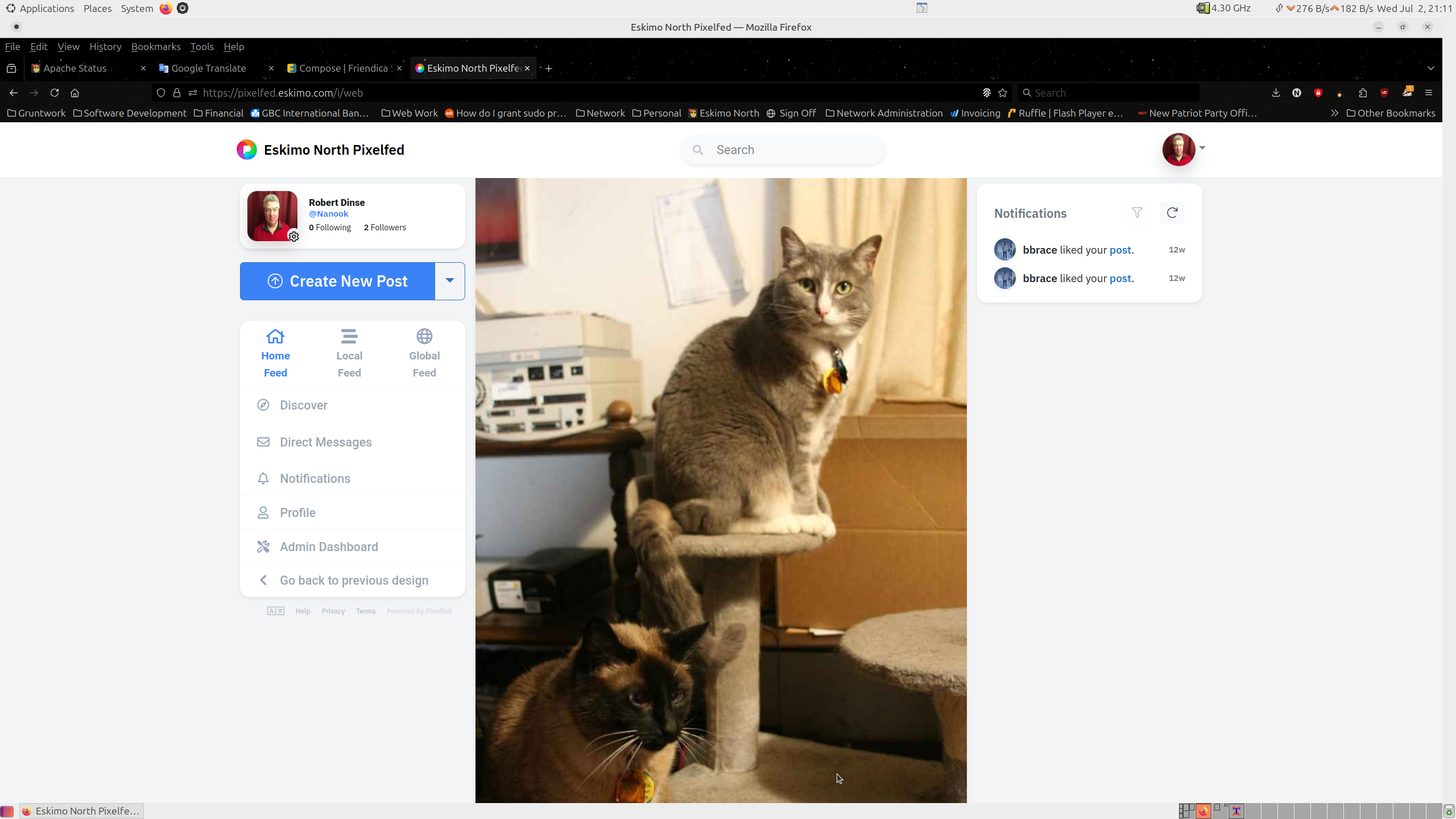Eskimo North Fast Hosting
Linux Friendly Virtual Private Servers, Shell Accounts, and Hosting.
Tired of dealing with Godaddy, Hostgater, BlueHost? Contact Us!
Our Servers have full support for https and http/2.
Knowledgeable human assistance via phone, e-mail, or tickets.
Call Us Now at (206) 812-0051 or (800) 246-6874.
|
|
|
|
|
|
- Web Apps
- Web based applications. These are programs that actually run and display in your browser, such as Web Mail, phpMyAdmin, a Java SSH Shell, forums, StatusNet, Traceroute, and Your IP.
- Services
- Information about the services we offer; Shell accounts with remote desktop capability and sound, Web hosting, Web Design, PC work, DSL, ISDN, and Dial access and other services.
- Support
- Setup e-mail and Usenet news clients, customize spam filters, including white listing, black listing, setting the sensitivity threshold and other tweaks. Setup X2Go, OpenNX, NX player, and other remote desktops and configure DSL and 56k dial-up accounts. Help with websites, frequently asked questions, and trouble tickets.
- Links
- Links to Customer pages as well as many useful resources on the web, including Linux resources, useful information about building websites, and local resources relating to Shoreline and the surrounding Puget Sound area resources.
- Information
- The Information section contains information about our history, contact information, eskimo news, information and graphics for linking to us (we always appreciate that), payment information and also various customer review sites where you can find independent reviews of our service.
- Games
- There are three games sections, Eskimo Arcade, games contained within our main website, presently is mostly broken as the result of a switch to https, I’m working on that, and two external sites Y B Bored (ybbored.com), and Defender Games (defender-games.net).
Check it out, explore, let me know of anything you think would make it better.
Try it out on your Smart Phone, it’s all responsive and mobile friendly. Some of the webmail options work on some SmartPhones. If the default webmail doesn’t work well for you, try the RoundCube or RainLoop alternatives. If neither of those work well, there is a ownCloud mail client that works very well on mobile devices.
Eskimo North, P.O. Box 55816, Shoreline, WA 98155 Tel: 206-812-0051


